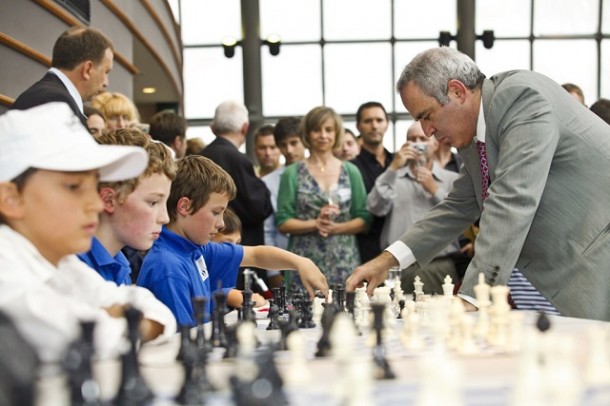INDIA. If a child had told his parents a decade ago that he wants to pursue chess as a career, the immediate reply would have been “Are you crazy?” Yet now, the situation is different: chess can become a realistic full-time career. Players such as the Norwegian 22-year-old Magnus Carlsen, No. 1 in the World Chess Federation, are motivating kids to start chess, and technology is providing tools to make their dream a reality.
In India, Gujarat Chief Minister Narendra Modi joined forces with the country’s current World Chess Champion, Viswanathan Anand, to make chess a compulsory subject in his state’s school curricula as early as 2009. On a visit to the Caucasian port city Baku, where Grandmaster Garry Kasparov got his start, Modi became aware that kids in Baku were deemed more intelligent than their peers in the USSR. The reason: they had been taught to play chess early on.
A report by the Kasparov Chess Foundation Europe confirms that chess has been proven to enhance problem solving, memory, concentration, intellectual maturity, creativity, self-esteem and quite a number of other abilities. Children that excel in chess are likely to improve their academic performance, and will be able to handle critical situations in their personal life more effectively, too.
Modi is convinced that “chess isn’t just a game but an inexpensive and simple way of transforming life.” Working with Anand, the Sports Authority of Gujarat, the Gujarat State Chess Association, the National Institute of Information Technology (NIIT), the government has trained 1,400 school teachers and provided 200,000 students with chess kits.
Anand himself travels all around the globe to promote chess. Specifically, he plays simultaneous exhibition matches against players of all ages, inspiring them to pursue it as a sport and as a career.
But even if you are not lucky enough to be taught chess in school or attend a match with Anand, technology allows you to teach yourself. With the advancement of parallel computing, chess programs such as Houdini 3.0, Hirac and Fritz can now teach any person to play like a Grandmaster. The demo version of these softwares are available for free on the internet.
Here in India, we see the direct effects: in the last couple of years, the number of chess clubs in the city of Ahmedabad has increased. In December 2010, Ahmedabad entered the Guinness book for breaking the world record for the highest number of chess games played simultaneously in one location. A total of 20,000 players came together at the Gujarat University Grounds in an event organized by the government.
But that isn’t the only incentive offered by the government with respect to chess. High ELO ratings, which calculate the relative skill of players in competitor-versus-competitor chess games, can help you get a government job. “Meritorious Sports Persons” can apply for posts such as Tax Inspector or Tax Assistant. Players with an ELO rating above 2300 or players representing India at an international level are given preference and likely to be hired. (You can find examples of recruitment advertisements for such “meritorious sports persons” can in Ahmedabad and Mumbai online).
From the corporate side, more and more companies are ready to sponsor aspiring chess players. At age 18, G.N. Gopal from Kerala became the first teenage Grandmaster, and scored sponsorship from the Geojit group, a leading retail stock broking firm.
But winning 17 million dollars for the World Chess Champion title, as Viswanathan Anand did, won’t be easy. The competition is getting tougher and tougher. Hurry up and start early if you want a shot at becoming the next Kasparov or Anand.

